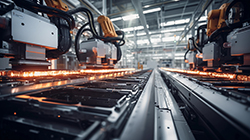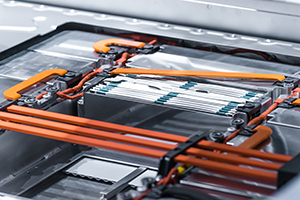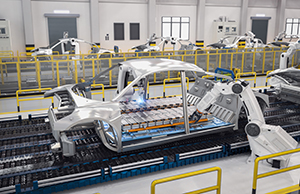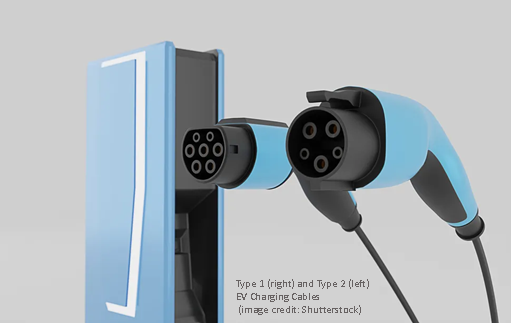Electric Vehicles
Truth and Myths About EVs
This could seem like an easy article because a link to the EPA site provides some myths and facts. Indeed, there is so much online about electric vehicles it can be overwhelming to absorb all the content. What are the pros and cons? What are the costs for consumers and manufacturers? How does this affect the economy? Is an electric vehicle the answer to reducing vehicle emissions or is this a knee-jerk reaction to climate control? Is one problem being traded for another without science to support it? See what I mean? There’s just so much!
Beginning with a current event seems appropriate and may prove to be helpful. The United Auto Workers union (UAW) states one of their concerns is that workers will lose jobs as electric vehicle (EV) production expands, and from all perspectives, EV production will expand. There is no argument about that. The call to act to cut carbon emissions for the sake of climate change pressured automakers into scaling up EV production. Once government tax credits were available, automakers began to spend to develop EVs.
The truth is, UAW does not want to stop EV production, but their concern is the decrease in labor needed for EV production. EV powertrains are mechanically simpler than internal combustion engine (ICE) powertrains, (EVs have 60% fewer moving parts) which could result in the loss of jobs. Additionally, UAW members are happy to build combustion engine vehicles, EVs, and produce EV batteries as well. They just want to secure the work at Big Three Standards by which they are accustomed to earning their living. Battery production plants are increasing in the U.S. and the UAW would like to be a part of organizing these plants. However, federal incentives resulted in automakers joining with independent companies to build these battery plants making union organization efforts difficult.
On the side of the automakers the claim is the transition from ICE to EVs is expensive. Much like pharmaceutical companies that claim the high prices paid for drugs allow them to continue research and development for new and/or better drugs, even to find cures. Auto companies are essentially claiming the same. Because of the high costs of developing and transitioning to EV manufacturing, they need to reinvest profits into this effort.
Automakers claim competition is intense and losses are currently recorded for EV sales. The strategy includes investing in improving the product so sales will turn around and become profitable. As such, current company profits (from sales other than EVs) need to be reinvested in research and development. Ironically, if costs are passed down to consumers, as is typical, sales could lag, and again, losses incurred.
In some cases, auto manufacturing plants have closed because the transition was too costly. Auto workers want security, but that’s a challenge for the union because closing a plant creates a cost-cutting opportunity for the automakers. Additionally, federal incentives flow into nonunionized plants at the objection of the UAW. More recent funding from the government was announced to fund the conversion of auto plants to EV manufacturing, emphasizing that high-paying and unionized companies would be first in line for those funds. This is a critical component of the funding because the UAW wants to unionize EV production, and this would be beneficial. Meanwhile GM, Ford, and Stellantis must compete with Tesla, which is not unionized, creating tough competition, which obviously affects pricing.
All this means the economy is most definitely affected and that as consumers we may pay more for our transportation, regardless of the type we choose. Automakers benefit from our tax dollars to engineer effective and efficient vehicles in efforts to curb planet destruction. It’s a price we are likely to favor…or is it? To answer this question, we need to examine components such as:
- Battery manufacturing
- Charging station infrastructure
- Effects on the Power Grid
Battery Manufacturing

As demand increases battery manufacturing facilities are increasing across the USA. Although other countries dominate the EV battery production, the U.S. is quickly growing. Complicating the issue is that not all EV batteries are alike. Battery type depends upon the auto manufacturer. It is safe to say there are three major types of EV batteries currently available for sale in the market. The three types of lithium-ion batteries are:
- lithium manganese cobalt oxide (NMC),
- lithium iron phosphate (LFP), and
- lithium nickel-cobalt-aluminum oxide (NCA).
The cost to produce lithium-ion battery packs had been declining until 2022 when raw mineral prices rose as a result of low supply and high demand. This statement introduces two new areas to review: 1) battery packs and 2) raw minerals.
Battery Packs

In many households, single batteries are needed for some battery operated items, such as a smoke detector. Or, in the case of most TV remote controls, two or three batteries are required. These are referred to as single cell batteries. But the power needed to propel a car is so much greater that essentially an EV battery consists of multiple battery cells grouped into a battery module. Finally, multiple modules are stored into the battery pack. (Note, battery cells for EVs are flat-cell batteries as space dictates.) Wow, that took a lot of energy!

In part, this is why a battery type depends on the automaker. Each independent car manufacturer uses a different number of cells and modules within the pack. With all the stored energy in the battery pack, a management system is necessary to control the flow of the power. A standard electrical component is connected to each battery module to measure the state of the charge, the capacity and other safety measures. With all the heat generated from this energy, another component is needed to control the cooling of the battery cells. As you may have guessed, there are multiple choices on how to accomplish this and each manufacturer uses methods that best fit the other components. All this to compile a battery pack and we haven’t even discussed the raw minerals needed!
Raw Minerals
All the forecasts indicate that lithium-ion batteries will be the standard solution for electric cars over the next ten years. The main substances needed will be the chemical elements graphite, cobalt, lithium, manganese, and nickel. Cobalt and lithium are the rarer of these metals and not as easy to source. Rare metals need to be mined out of the earth. Because of the difficulty in sourcing, which leads to increased costs, automakers work on ways to find substitute materials, or at least discover ways to reduce the amount of the rare metals required in EV batteries. Everyone should look forward to new discoveries because mining presents many questionable safety and environmental concerns.
In some rare metal mining processes, the end result is only 0.2% rare metal and 99.8% waste, toxic waste which is regretfully returned to the earth. In addition, sulphur dioxide is released into the atmosphere, which can be harmful to aquatic life in nearby rivers and streams. Most disturbing of all surrounds the mining of cobalt. Congo mines more than half the world’s cobalt, but it is reported that the miners are paid only $1-2 per day. Yet, the most horrendous of all is that 40,000 children are the miners.
Again, we look forward to new discoveries to reduce the need to mine these rare minerals. One such option is recycling batteries to recover materials. One source claim 92% less lithium mining would be required if recycling processes were applied. However, there are only a handful of facilities capable of performing the process.
According to Volkswagen, the recycling process does not involve smelting in a blast furnace, which would use large amounts of energy. The used battery systems delivered to the plant are deep discharged and disassembled. The individual parts are shredded to form granulate and this is then dried. The process produces aluminum, copper, and plastics and, most importantly, a black powdery mixture that contains the essential battery raw materials: lithium, nickel, manganese, cobalt and graphite. Specialist partners of Volkswagen are subsequently responsible for separating and processing the individual elements by means of hydro-metallurgical processes that use water and chemicals.1
Charging Station Infrastructure
As previously mentioned, there are different EV battery types and each type stores and releases different levels of energy. Each type of battery has various types of connectors for hooking up to a charging port. Connector types are not standardized. However, it may be comforting to know that the charging connectors and ports will only fit when compatible, so it isn’t possible to cause damage by attempting to use one style with another.
Over 80% of the U.S. non-residential charging ports are Level 2 charges reporting over 130,000 charging ports in the USA. The much discussed Infrastructure Law focuses on increasing the number of DC Fast Chargers along highways to enhance long distance travel.
| EV Battery Charging Data | |||
| Level 1 Chargers | Mostly Residential | Standard 120-volt AC Outlet | Adds 2-5 miles per hour of charging |
| Level 2 Chargers | Public Places | 240-volt AC outlet | Adds 10-20 miles per hour of charging |
| DC Fast Chargers | Along Interstates | 80% charge in 20-60 minutes | |

Effects on the Power Grid
The U.S. overall electric power grid can technically supply enough electricity to charge all the EVs requiring a charge, however, localization may not. Local electrical use is analyzed before and after cities and neighborhoods are developed. Plans are made to predetermine electrical usage so that powerlines and transformers can be installed to accommodate the needs. EVs were not prevalent at the time most city infrastructures were developed so if your entire neighborhood all had EVs and each household plugged in at night, it could disturb the grid. This will be an area that local electricity utility will monitor to determine whether upgrades are necessary to improve the existing electrical grid. Other examples are new subdivisions, business parks, or other commercial developments. All these could impact the current electricity usage and require upgrades.
A benefit of a plugged in EV battery is the potential to be circular, i.e., to send a supply of electricity to the electric grid. If an EV battery is parked, but plugged in, there is an opportunity to be a source of electricity. Of course, this would need to be coordinated with the local electric utility, and this would be monitored by periods of peak and low electricity demands.
The Decision to Own an EV
Statistics have shown that the USA was behind in EV and battery production, but that is quickly changing. The progress will create awareness and give the public confidence when deciding to make that EV purchase. Individuals will help in the fight on climate change and possibly benefit as a “supplier” of electricity. In general, the big picture looks quite favorable. However, as we have learned, there are trade-offs to the pros and cons. For example, does society wish to eliminate tailpipe emissions at the cost of child labor? Should we drive an EV even though 98% toxic waste will be returned to the earth?
All things considered, EVs appear to be a good development, and as progress continues, especially in the realm of material development, the pros will advance to outweigh the cons. At least that is the goal. We know the impact on society will come at a cost but caring for “The Planet” is necessary for future generations.
1 Battery Raw Materials - Where from and Where to? - PMC (nih.gov)
Other References:
Use of energy for transportation electric vehicles - U.S. Energy Information Administration (EIA)
Every EV Charging Standard and Connector Type Explained (lifewire.com)

